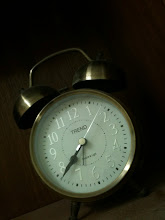It would be much beneficial if I practice the cardiopulmonary resuscitation instead of just simply write about it. But in order to do what you are supposed to do, first you would have to know the steps. In short, it can be summed up in an acronym DR ABC. This method has been taught to us since our first year of med school. I still remember the whole batch gathered at our college's Dining Hall with our final year seniors as our supervisors and not forgetting the instructors (lecturer and nurses from EM). Approximately 100 mannequins were brought to the hot and humid Dining Hall for the program. I remember, one of my supervisors (cum senior) even wrote the 'magic' word "DR ABC" on my forearm using pen. Future fast forward, it was our turn to supervise our juniors doing the CPR a few months ago. But I forgot to bring a pen, so I could not do the same. In fact, I don't think I will do it anyway, because the juniors in my group were all females. Anyway, let's go back to the main business, what is DR ABC? And how do we perform the CPR? Again, this is just for my revision.
Patient suddenly fell unconscious. First of all,
D - danger; look for any danger to the patient as well as to yourself in the surrounding.
R - response; ask the patient to see whether he's conscious or not. "Sir, do you hear me sir? Please respond to me, sir. Sir, sir!) and simultaneously pat patients shoulder with both hands.
A - airway; head tilt - chin lift if there was no suspicion of cervical spine fracture/dislocation. Clear the mouth from anything (food etc)
B - breathing; put your ear close to the patient's mouth - to hear his breath and turn to face patient's chest - to see chest movements indicating the respiratory effort.
C - circulation; check for carotid pulse.
If the breathing and circulation are normal, turn patient into recovery position. (steps, check for any injuries - don't move them if patient is hurt; bend the right arm to avoid him from rolling; gently turn patient to the right side; bend left leg to support the position; tilt his head up and tuck in the left hand underneath the cheek; call for help while someone is watching over him).
If breathing and circulation are abnormal, then call for help from people nearby and ask for AED (automated external defibrillator) if situation took place outside hospital setting.
Give two rescue breaths (don't forget to pinch his nose) within 2 seconds and 30 chest compressions (rate 100/min). Make sure it is uninterrupted for at least 5 cycles or until help arrives.
In the hospital setting, there is further management of patient involving defibrillation and drugs. There is an algorithm to follow in the guideline. However, I do not wish to further elaborate upon that, because it would be easier to revise by looking at the algorithm. Thanks, that about it for now. ^^
Patient suddenly fell unconscious. First of all,
D - danger; look for any danger to the patient as well as to yourself in the surrounding.
R - response; ask the patient to see whether he's conscious or not. "Sir, do you hear me sir? Please respond to me, sir. Sir, sir!) and simultaneously pat patients shoulder with both hands.
A - airway; head tilt - chin lift if there was no suspicion of cervical spine fracture/dislocation. Clear the mouth from anything (food etc)
B - breathing; put your ear close to the patient's mouth - to hear his breath and turn to face patient's chest - to see chest movements indicating the respiratory effort.
C - circulation; check for carotid pulse.
If the breathing and circulation are normal, turn patient into recovery position. (steps, check for any injuries - don't move them if patient is hurt; bend the right arm to avoid him from rolling; gently turn patient to the right side; bend left leg to support the position; tilt his head up and tuck in the left hand underneath the cheek; call for help while someone is watching over him).
If breathing and circulation are abnormal, then call for help from people nearby and ask for AED (automated external defibrillator) if situation took place outside hospital setting.
Give two rescue breaths (don't forget to pinch his nose) within 2 seconds and 30 chest compressions (rate 100/min). Make sure it is uninterrupted for at least 5 cycles or until help arrives.
In the hospital setting, there is further management of patient involving defibrillation and drugs. There is an algorithm to follow in the guideline. However, I do not wish to further elaborate upon that, because it would be easier to revise by looking at the algorithm. Thanks, that about it for now. ^^





No comments:
Post a Comment